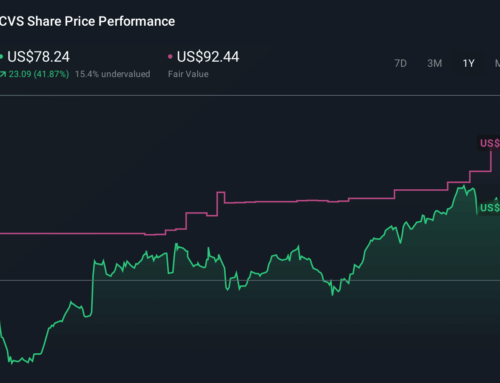Inside Kazakhstan’s Green Energy Transformation
May 11, 2025
The Central Asian state of Kazakhstan – the world’s largest landlocked country – has major renewable energy ambitions that include wind, solar, and hydropower, as well as green hydrogen, as part of the government’s aims for a green transition. The government plans to support a shift away from a reliance on fossil fuels to a lower-carbon power sector. At present, coal continues to be Kazakhstan’s main energy source, providing around 64.7 percent of?the total projected generation?and 74 percent of thermal generation in 2019. However, the government hopes to attract higher levels of foreign investment over the coming decades to increase Kazakhstan’s renewable energy capacity and reduce its dependence on coal.
The government’s National Green Growth Plan introduced several ambitious objectives for a green transition. These include an energy mix of 49 percent coal, 21 percent gas, 10 percent hydropower, 8 percent nuclear power and a wide variety of renewable resources by the end of the decade. However, energy experts believe that Kazakhstan’s coal dependence is unlikely to fall this rapidly and expect coal to continue contributing around 64.9 percent of total electricity generation by 2028.
The government plans to launch a domestic nuclear energy programme to support the country’s shift to green, as well as significant public and private investment in non-hydro renewables. There has been a greater openness to foreign investment in recent years and the government aims to attract high levels of private financing for renewable energy projects in the coming years. However, investor uncertainty and a complicated business environment are hindering the achievement of this goal. Nevertheless, President Nazarbayev has stated the aim to reach 50 percent of renewable energy sources in the total energy mix by 2050.
Kazakhstan is home to abundant renewable energy sources, and with greater funding, it could significantly increase its green energy capacity over the next few decades. The Ministry of Energy launched a competitive auction scheme for renewable energy projects in 2018 and has since issued annual project schedules. In February, the ministry approved its 2025 renewable energy auction schedule, with a total of 1,810 MW of renewable energy capacity to be allocated through the auction of 13 projects across multiple sectors, including four wind power projects (one with energy storage), four solar projects, four hydropower projects, and one biomass project.
In late April, the government approved a major renewable energy deal with the United Arab Emirates (UAE) to build a 1 GW wind power plant. The facility will be developed in the Zhambyl region and will include a 300 MW energy storage system. Kazakh Energy Minister Erlan Akkenzhenov said the agreement marks a major milestone in renewable energy cooperation and expects the project to boost Kazakhstan’s renewable energy share by around 3 percent.
The deal supports the development of two 500 MW wind farms, capable of generating 3.4 billion kilowatt-hours of electricity a year, as well as the construction of 425 km of new transmission lines. The project is expected to attract $1.4 billion in foreign direct investment and support the creation of around 1,000 construction jobs and up to 100 permanent roles.
Together, wind and solar projects provided around 5 percent of Kazakhstan’s electricity generation in 2023. Thanks to its vast land area, Kazakhstan has the highest onshore wind potential in the Central Asian region, with a potential annual generating capacity of around 929 TWh, which is equivalent to three times the region’s power demand. Further, the planned green energy corridors connecting Kazakhstan, Uzbekistan, Azerbaijan, Türkiye, and the EU could help promote the power-sharing of renewable energy sources, supporting low-cost, sustainable power across borders.
In addition to conventional renewable energy projects, the government is also open to alternative energy projects, such as green hydrogen. Kazakhstan has significant potential to develop its hydrogen industry and become a regional powerhouse in clean energy. A European Bank for Reconstruction and Development assessment showed that Kazakhstan has good potential for the large-scale production of both green and blue hydrogen. In 2024, the country’s Energy Ministry approved the concept for the development of hydrogen energy until 2040, with green hydrogen expected to account for 50 percent of this production.
However, the hydrogen industry is largely undeveloped in Kazakhstan at present, meaning that significant investment will be needed for the country to develop its hydrogen potential. If successful, Kazakhstan is ideally situated to become a major supplier of green hydrogen to the EU via routes like the Trans-Caspian International Transport Corridor. The demand for green hydrogen is expected to rise dramatically over the coming decades, as governments strive to decarbonise hard-to-abate industries using the fuel to support a green transition.
Kazakhstan has great potential to develop its renewable energy sector and significantly increase its green energy capacity over the coming decades. Achieving this will require high levels of foreign investment and sectoral expertise to support the development of nascent industries, such as green hydrogen. However, if successful, Kazakhstan could become a regional green energy hub and an exporter of green hydrogen to Europe.
By Felicity Bradstock for Oilprice.com
More Top Reads From Oilprice.com
- Big Oil Isn’t Backing Down at $60 Oil
- US Crude Oil Output to Peak Sooner Than Expected
- The Market Is Well Supplied – So Why Is Saudi Arabia Raising Oil Prices?
Search
RECENT PRESS RELEASES
Related Post


